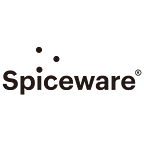Why ‘Cloud Data Security’ Is a Must for Companies Using SaaS
Until the introduction of cloud services, companies developed groupware or used a custom on-premise environment for business efficiency. However, doing so required internal infrastructure, and companies had no choice but to invest much money in database room construction, repair, maintenance, etc. To resolve such problems of the on-premise environment, they ultimately came up with the idea of implementing cloud-based SaaS, which does not require building their respective infrastructures.
SaaS stands for Software-as-a-Service. It is cloud computing that supplies cloud apps, basic IT infra and platforms to end-users through an internet browser. In other words, access to the internet is the only prerequisite for using SaaS, not requiring additional data connections in various environments such as PC/mobile, etc. Various collaboration tools used by companies to improve work efficiency fall under the category of SaaS — Slack and Zoom for communication, SurveyMonkey and Zendesk for customer support and Salesforce for sales are examples of such.
SaaS applications are preferred for its convenience and cost effectiveness. Companies save on early implementation costs as well as repair and maintenance costs. However, there is one thing these companies overlook: security stability.
Every SaaS app has a unique security environment.
Many companies save their customer’s personal information in cloud storage and share them through SaaS. Thus, cloud service providers must maintain a high level of security and stability that can enable SaaS user companies to protect their data. Unfortunately, not every cloud service provider can provide the same level of security and stability.
Cloud threat events across all industries from January to April 2020 (Source: McAfee ‘Cloud Adoption and Risk Report’)
The average number of SaaS applications used by companies has increased exponentially over the past few years. In 2015, companies used an average of 8 SaaS apps, and the number steadily grew to 12 and 16 in the years 2016, 2017 respectively. The number exploded to 80 by the year 2021. With this many SaaS apps used on average, security of data dispersed throughout these apps becomes harder to maintain.
The overall security level for SaaS users depends on the data access tool quality of SaaS applications because hackers target the most vulnerable server or company when they want to steal personal information or operation authorities. Clearly, hackers want to attack the most vulnerable security areas no matter where they are since it would mean access to desired data without great effort.
In addition, if company employees use unauthorized SaaS, then due to the vulnerable security of cloud service, the company’s account and information can be easily leaked or stolen. Besides permitted SaaS, employees also use personal SaaS, and developers at times use development tools barred by their companies, acting as the main causes of security in companies.
One thing for SaaS users to keep in mind is that a cloud service provider cannot control all the user data stored in the cloud. After all, the basic responsibilities lie with the users. Thus, users must maintain security by protecting themselves from data threats and ensure account security. As the Shared Responsibility Model by AWS shows, the cloud provider is responsible for security “of the cloud” while the customer is responsible for security “in the cloud.”
In order to really focus on service development and operations, security protection is a must.
For data safety and protection on SaaS, data should be shared only with an official SaaS of companies with verified security. Moreover, you should be able to monitor the entire process, track SaaS users, and oversee the data used. Spiceware One ZTS allows companies to efficiently and effective monitor different SaaS services through one console.
① Shows the number of accesses to SaaS or managed or unmanaged websites
② Shows the number of users and amount of data of SaaS services and websites
③ Shows where the users are accessing from
④ Shows the amount of uploaded/downloaded data, as well as the amount of traffic at SaaS services and websites
⑤ Tracks users, the device used to access files, and their use time and duration for verification
If someone uses a company’s unofficial SaaS, then data traffic records are left behind and Spiceware One records the data, allowing you to specify unofficial SaaS users easily. As a result, you could monitor every user’s activity and events, and apply standardized security policies to every employee, whether remote, hybrid, or on site.
Contact us to find out how to regain your data privilege now.
